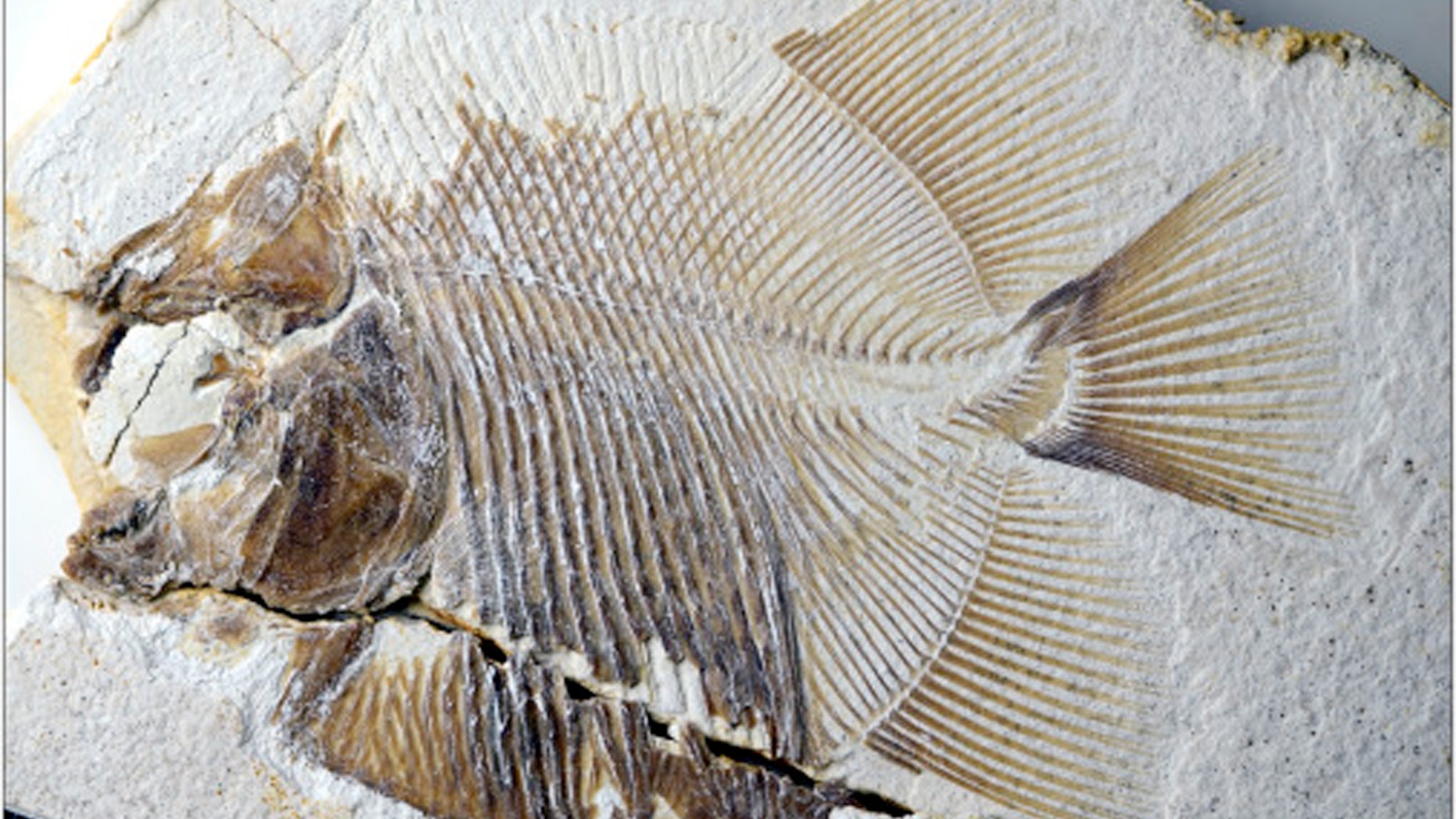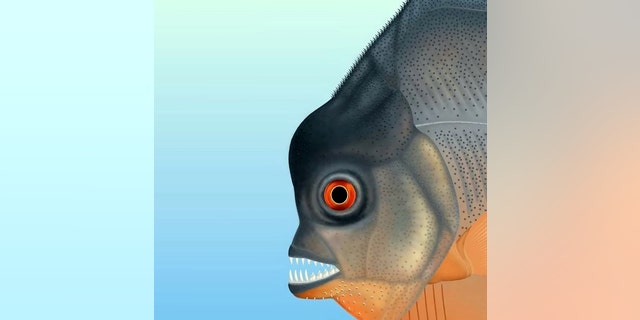
7.1 cm standard length, from the Late Jurassic of Ettling, Solnhofen Archipelago, Germany, the earliest fin-cutting piranha-like ray-finned fish. (Credit: M. Ebert)
This is one fish that definitely belonged in Jurassic mark – bite mark, that is.
A 150-million-year old Piranha-like fish has been discovered, capable of ripping the flesh off the bones of its prey, according to a new study.
The fish, Piranhamesodon pinnatomus, lived during the late Jurassic period, when sharks and turtles feasted on creatures in the sea using their teeth and dinosaurs roamed the land. However, fish were thought to eat only plankton and crushed shells or swallow their food whole, so the presence of teeth surprised the researchers.
85 MILLION-YEAR-OLD SEA MONSTER FOUND IN KANSAS
"The dentition pattern, tooth shape, jaw morphology, and mechanics are all indicative of a feeding apparatus suitable for slicing flesh or fins, thus pioneering a new ecological niche," a summary of the study reads. "Evidence suggests that it may have exploited aggressive mimicry in a striking parallel to the feeding patterns of modern piranha."

This illustration shows an artist’s reconstruction of the head of the piranha-like fish. The remains of an 150-million-year old piranha-like species – the earliest known flesh-eating fish – have been discovered in a German quarry. (Credit: SWNS)
The summary continues: "Remarkably, fossil fishes recovered from the same deposits as the new pycnodontiform show injuries to fins and fin bases. As a marine piranha-like fish contemporary with dinosaurs, it is the oldest known flesh-eating actinopterygian, revealing remarkable convergent evolution with modern piranhas."
The study was published in the scientific journal Cell Biology.
These dinosaur-aged piranhas were discovered in German limestone, in the quarry of Ettling in the Solnhofen region of the country.
The study's co-authors, Dr. Martina Kölbl-Ebert and James Cook University professor David Bellwood, were "stunned" at the findings, comparing it to finding a "sheep with a snarl like a wolf." They were able to use CT-scans to look at the fossilized fish and estimate characteristics such as bite force and then compare them with modern-day piranhas.
"But what was even more remarkable is that it was from the Jurassic," Dr. Kölbl-Ebert said in a statement. "Fish as we know them, bony fishes, just did not bite flesh of other fishes at that time. Sharks have been able to bite out chunks of flesh but throughout history bony fishes have either fed on invertebrates or largely swallowed their prey whole. Biting chunks of flesh or fins was something that came much later."
Bellwood was amazed at how similar these fish are to modern-day piranhas, which do not eat living flesh as is commonly thought, but the fins of other fishes.
SCIENTISTS MAY HAVE UNCOVERED WHAT DINOSAUR DNA LOOKS LIKE
"This is an amazing parallel with modern piranhas, which feed predominantly not on flesh but the fins of other fishes," Bellwood added in the statement. "It's a remarkably smart move as fins regrow, a neat renewable resource. Feed on a fish and it is dead; nibble its fins and you have food for the future."
Piranhas will occasionally eat small mammals, but it is usually when the animal is already dead.

Scientists say the "remarkable" bony fish lived in the sea at the same time as the dinosaurs roamed the earth and had teeth like a piranha, which it used to bite off chunks of flesh from other fish. (Credit: SWNS)
Though P. pinnatomus is not related to the modern fresh-water piranha, its similarities (such as long pointed teeth and strong jaws) highlight the "staggering example of evolutionary versatility and opportunism" that was going on in the salty seas millions of years ago.
"The new finding represents the earliest record of a bony fish that bit bits off other fishes, and what's more it was doing it in the sea," Bellwood said. "So when dinosaurs were walking the earth and small dinosaurs were trying to fly with the pterosaurs, fish were swimming around their feet tearing the fins or flesh off each other."
Follow Chris Ciaccia on Twitter @Chris_Ciaccia
Source: Read Full Article